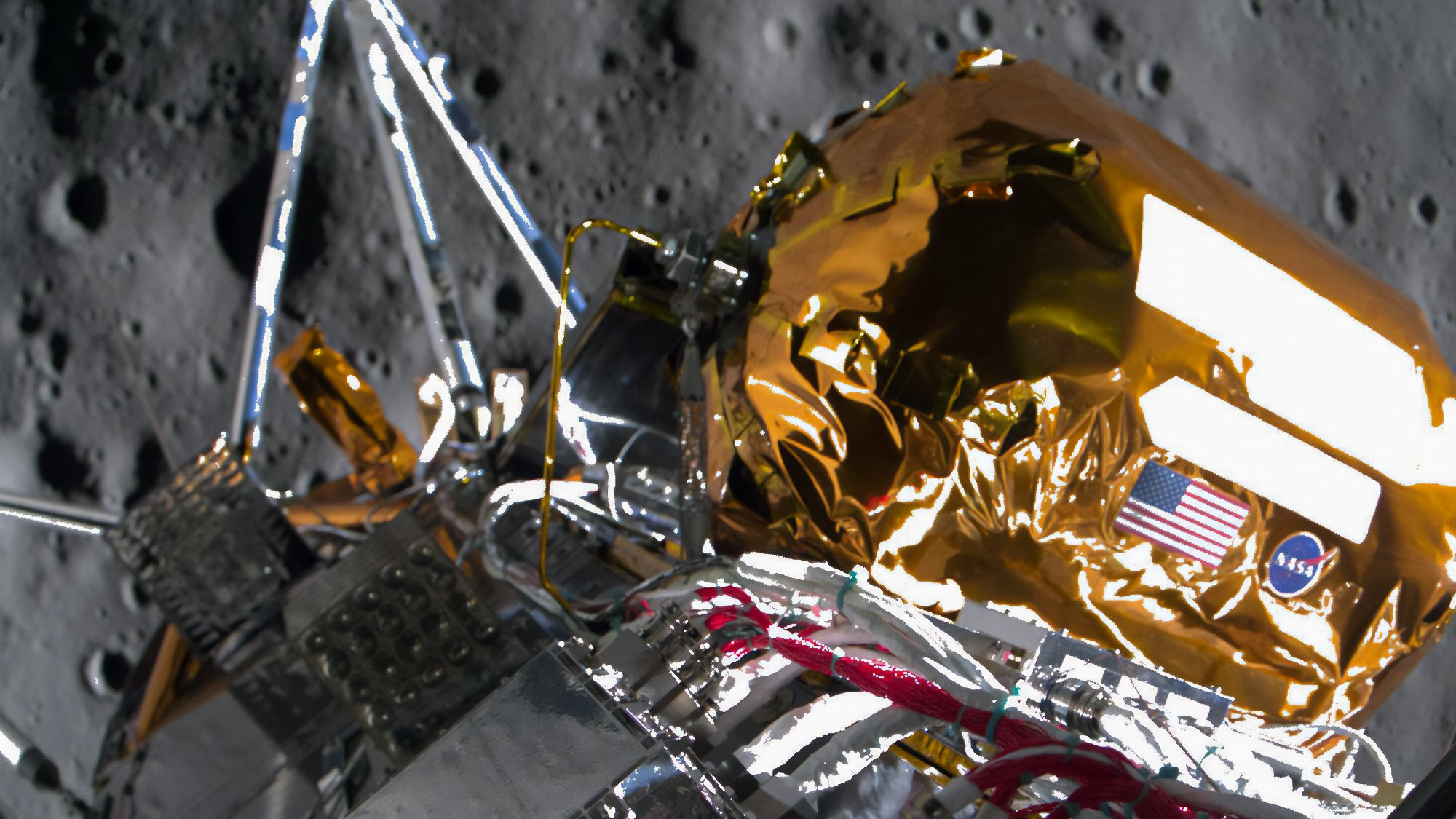
Intuitive Machines' Odysseus lander has beamed home a few more photos of its pioneering journey to the moon.
Odysseus touched down about 190 miles (300 kilometers) from the moon's south pole on Thursday (Feb. 22), becoming the first private spacecraft ever to land softly on Earth's nearest neighbor — and the first American vehicle to do since since the final Apollo mission in 1972.
We just got a few new looks at Odysseus' epic descent, thanks to three photos that Intuitive Machines posted on X today (Feb. 27).
"The images included here are the closest observations of any spaceflight mission to the south pole region of the moon. Odysseus is quite the photographer, capturing this image approximately 30 meters [100 feet] above the lunar surface while his main engine throttled down more than 24,000 mph [38,600 kph]," the Houston-based company wrote in the X post.
Related: Intuitive Machines' Odysseus moon lander beams home 1st photos from lunar surface
The images included here are the closest observations of any spaceflight mission to the south pole region of the Moon. Odysseus is quite the photographer, capturing this image approximately 30 meters above the lunar surface while his main engine throttled down more than 24,000… pic.twitter.com/O6E7w3Y2HiFebruary 27, 2024
These photos were hard-won, as the delay in receiving (or least in posting) them suggests. Odysseus apparently tipped over onto its side during or shortly after touchdown, making communicating with the lander more difficult than its handlers had expected.
And time is running out for Odysseus and its mission, which is known as IM-1. Intuitive Machines recently estimated that they'd lose contact with the solar-powered spacecraft sometime this morning, as the sun sets over its landing site.
That timeline has been extended a bit, the company relayed in another X post today: "Flight controllers are working on final determination of battery life on the lander, which may continue up to an additional 10-20 hours."
Odysseus is carrying a total of 12 payloads on IM-1, which launched atop a SpaceX Falcon 9 rocket on Feb. 15.
Six of them are NASA science instruments or technology demonstrations manifested via the agency's Commercial Lunar Payload Services program, which aims to gather data that will aid future crewed landings conducted by the Artemis program.
The other six payloads were put onboard by a variety of customers. One of these payloads, called EagleCam, is a student-built camera system that was supposed to deploy during Odysseus' landing and capture photos of it from ground level. That didn't happen, however, because the spacecraft experienced navigation issues that complicated its descent.
The EagleCam team still hopes to deploy the camera and capture photos from the surface before Odysseus goes dark.







